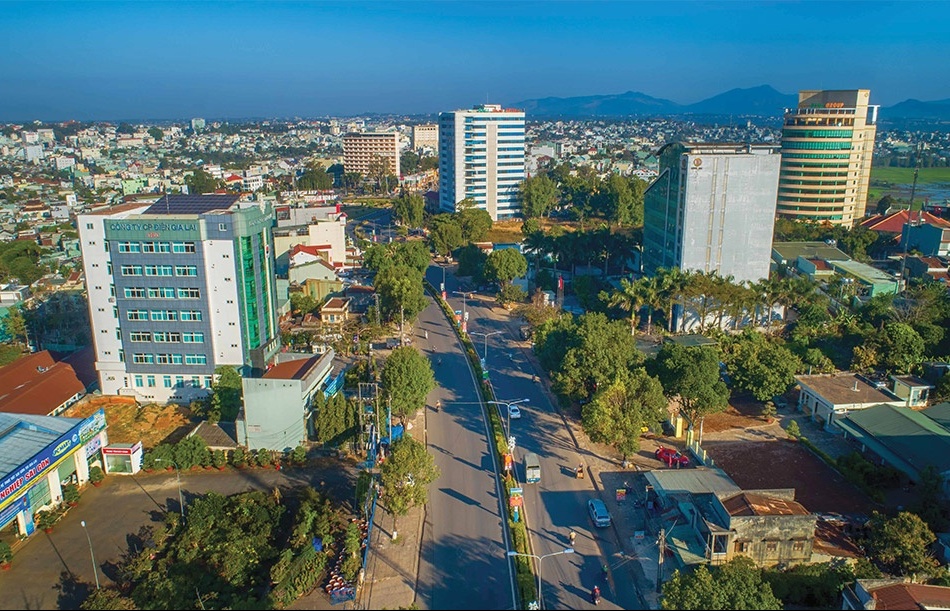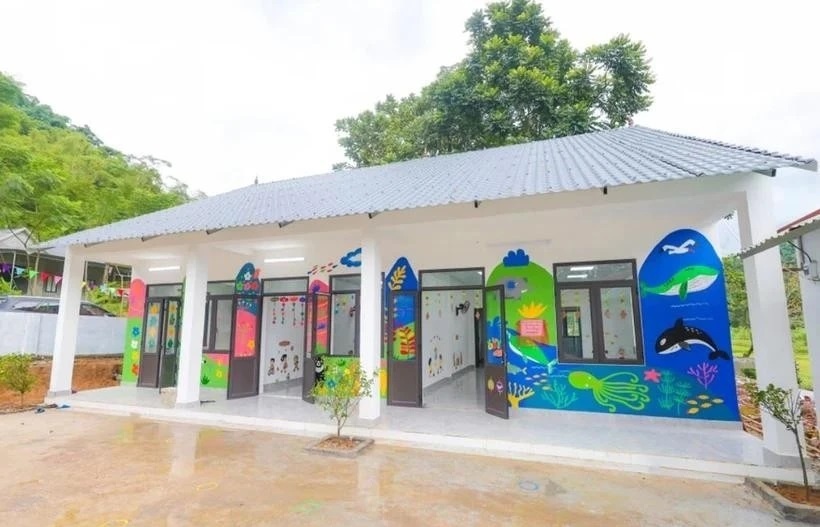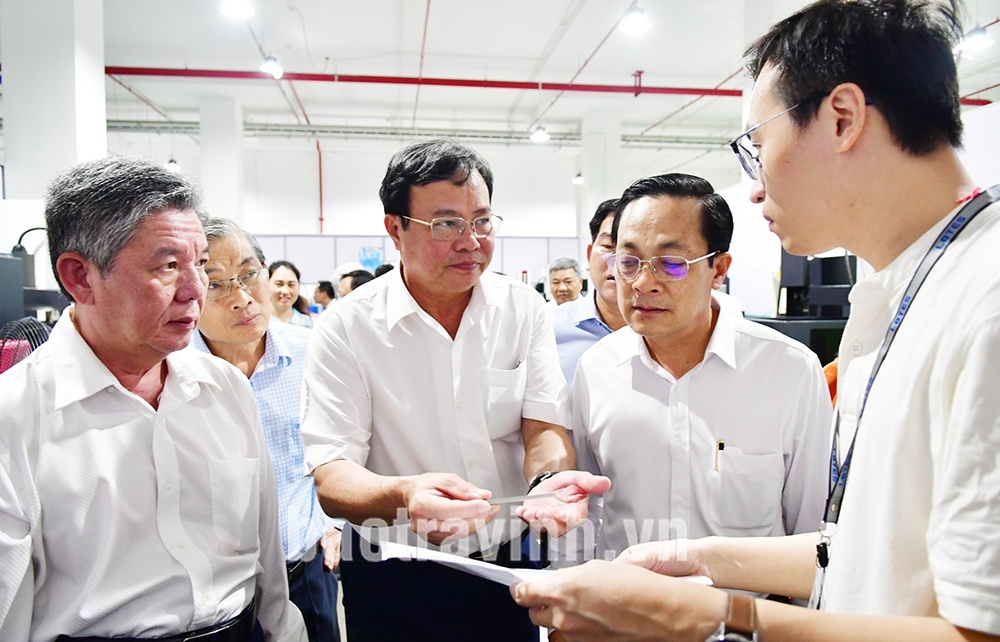Project’s bad fashion statement

Nobody is now working at Luxfashion, except 24 security men protecting the sealed assets around the clock
The $300 million European clothing complex, located in northern Ninh Binh province’s Gian Khau Industrial Park, has been totally locked down since early September, just six months after official becoming operational.
In late August, the local authorities were reported by a Vietnamese representative of Lifepro Vietnam that all foreign managerial staff of Luxfashion complex, one of Vietnam’s largest textile and garment factories, had left Vietnam without a trace for the last two months.
The 12.8 hectare complex’s assets are now protected by Vietnam Bank for Agriculture and Rural Development’s South Hanoi branch to which Lifepro Vietnam owes $150 million. The value of the sealed assets at the complex remains unknown. The bank has also asked Ninh Binh authorities not to appraise any application of Lifepro Vietnam’s ownership transfer to other investors without notifying the bank.
Regarding the case, Ninh Binh Provincial Industrial Parks Management Authority’s Investment Department chief Tran Van Trinh said three summons had been sent since early September to leaders of Luxfashion in the Ninh Binh complex and its representative office in Hanoi. However, they had been met by stony silence.
“The investors have not turned up since they secretly stopped operations. We [the local government] would like to work in a good-willed spirit with the investors to address their problems, while wanting to protect the local workers’ rights and our province’s prestige,” Trinh told VIR, adding that the local government was seeking higher-level help to deal with this case.
Lifepro Vietnam, with legal investment capital of $50 million, was licenced in January 2011 with four shareholders - Hong Kong Golden Principal Investment (63 per cent), Canadian investor Ahmed El Fehdi (30 per cent), domestic private firm Lifepro Vietnam (5 per cent) and Vietnam’s state-owned Interserco (2 per cent).
Lifepro Vietnam was restructured from the former Enzo Viet Joint Stock Company established in 2007 by Ahmed El Fehdi and local Thanh Dong Fine Arts Export and Import Company. Internal disagreement resulted in the local firm pulling out Enzo Viet in 2008.
Luxfashion’s knitwear production for export officially came into service in March this year, with the peak time employment of 920 local workers.
“The investor came to Vietnam with the confidence that the country will open a good investment opportunity due to its encouraging investment environment for foreign investors. We hoped to develop the project, create jobs for more than 5,000 local and foreign workers,” Boubker El Fehdi, Ahmed El Fehdi’s son who acted as the executive general director of Lifepro Vietnam, wrote to VIR when contacted by email last week.
El Fehdi, who also left Vietnam and did not mention where he was, declined to directly respond to VIR’s question whether the $150 million debt would be repaid, but said: “The problem is not Luxfashion or the investors but it’s lack of support and to throw a spanner in the works that prevents the company to produce and earn an income. Only with revenue the company will pay the debts.”
“Our project remains the same for the future, that means to recruit, produce, export, grow the economy and small families of our workers in general,” he said in the email.
Lifepro Vietnam is the latest case of absconding investors leaving bad debts with Vietnam’s commercial banks to hit the headlines, amid Vietnam’s economic woes. It follows notorious Taiwanese furniture-maker Kenmark Group having disappeared without repaying $44 million to two local commercial banks. Kenmark’s two factories abruptly stopped operating in May 2010.
Five years ago, Kenmark boasted it would pump $500 million into northern Hai Duong province’s Viet Hoa Industrial Park to building industrial production, trading and services facilities and urban areas.
|
Relevant regulations on foreign invested companies’ periodical reports
Specifically, a foreign invested company must make reports on: |
 Banking expert Nguyen Tri Hieu Banking expert Nguyen Tri HieuIn case of LuxFashion, the bad loans can be worked out in the way that the bank first establishes loan loss provision and exhausts all revenues to liquidate collaterals. The bank may then write off the net loan amount which is the gross loan amount minus loan loss provision minus liquidation proceed of collaterals, the loan write-off will take the loan assets off the balance sheet and may still continue to be monitored off the balance sheet. The amount of write-off will be charged to the profit of the bank. However, if the profit of the bank is not enough to cover the write-off, the remaining balance of the write-off may be charged against the shareholders’ equity of the bank. This is a big lesson for any Vietnamese bank financing a foreign company or a joint venture with foreign partners. Many financial investors in international business have good expertise to structure their finance and may find it easy to mis-represent and trick the domestic bank. To avoid this, banks must have appropriate credit analysis and evaluation policy and process, as well as strengthen the capability to monitor the loans and the borrowers after the loans are disbursed. The bank has to establish a loan workout policy to properly collect the bad debts and handle the bad debts if the loan becomes finally uncollectible, write-off a loan is the last step in handling the bad debts if nothing else can be done to recover the bad debts. Of course, write-off will affect the bank profitability but in the end it will clean the balance sheet and enable the balance sheet to reflect the true assets of the bank. Regarding to a join venture or business with foreign partners’ participation, the banks must do appropriate due diligent to not only understand the financial health of the foreign partners but also to know their representative. The case of LuxFashion may be a good case study for all domestic banks to be interested in. |
What the stars mean:
★ Poor ★ ★ Promising ★★★ Good ★★★★ Very good ★★★★★ Exceptional
 Tag:
Tag:
Related Contents
Latest News
More News
- Remarkable outcomes can be earned (December 25, 2024 | 11:00)
- Trade scope expands with British accession to CPTPP (December 25, 2024 | 10:00)
- Nghe An boasts workforce potential for industrial growth (December 25, 2024 | 08:30)
- Localities implement solutions for semiconductor projects (December 23, 2024 | 15:00)
- UK's Pharos Energy obtains licence extensions (December 23, 2024 | 14:41)
- Australia relationship has never been better (December 23, 2024 | 11:00)
- Tech goals require teamwork (December 23, 2024 | 10:34)
- Dong Thap pioneers ecosystem for startup businesses (December 23, 2024 | 09:35)
- Japan's Sojitz and Vinamilk put beef processing plant into operation in Vinh Phuc (December 19, 2024 | 16:20)
- Sanofi brings world’s first modular concept manufacturing facility to Singapore (December 19, 2024 | 16:17)

















 Mobile Version
Mobile Version